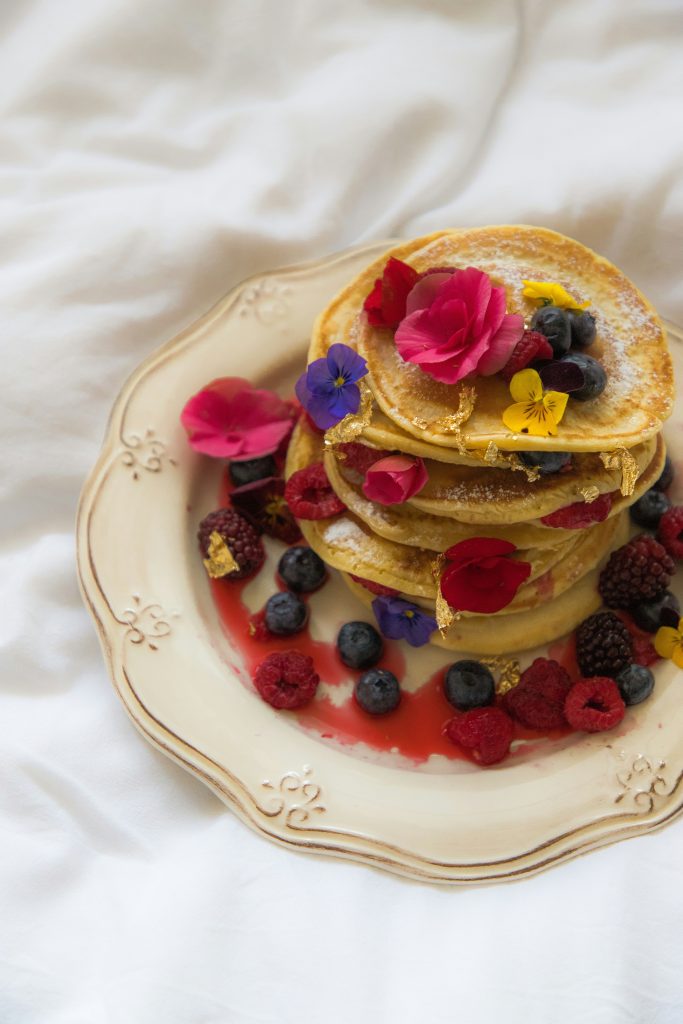
In the embrace of sustainability and the resurgence of home gardening, an elegant solution has emerged, marrying the beauty of traditional landscaping with the utility of home farming: edible landscaping. This innovative approach transcends the conventional divide between the ornamental and the utilitarian, offering a method to cultivate food in spaces that captivate the senses and enrich the soul. Whether gracing a modest urban balcony or sprawling across a suburban backyard, edible landscaping allows you to weave together flavorsome fruits, vegetables, and herbs into your garden’s tapestry, crafting a living space that nourishes both body and spirit. By selecting visually striking varieties and thoughtfully designing your garden, you can transform your outdoor space into a bountiful paradise that offers a feast for the eyes as much as for the table. Join us on a journey through the principles and practices of creating an edible landscape that flourishes in harmony with your aesthetic aspirations.
Choosing Ornamental Vegetable Varieties
Beauty Meets Bounty
The cornerstone of edible landscaping lies in the selection of plant varieties that offer both visual appeal and nutritional value. Vegetables like the ‘Bright Lights’ Swiss chard, with its kaleidoscope of stem colors ranging from gold to crimson, or the ‘Purple Peacock’ broccoli, which boasts striking purple leaves and florets, can turn a garden plot into a vibrant canvas. These varieties ensure that your garden’s visual appeal peaks alongside its harvest.
Edible Flowers: A Splash of Color
Edible flowers are invaluable allies in the edible landscaper’s palette. Nasturtiums, with their fiery blooms, not only add a pop of color but also a peppery zest to salads. Violas and pansies contribute a subtle sweetness to culinary creations, alongside a spectrum of color that can brighten any corner of your garden.
Herbs for Aromatics and Aesthetics
Herbs such as rosemary and lavender are dual-purpose gems, offering culinary uses and aesthetic appeal. Their presence in the garden adds a layer of texture and fragrance, serving as both focal points and functional plants. Incorporating these herbs as border plants or within sensory gardens can elevate the overall design and usability of your space.
Designing Your Edible Landscape
Creating a Master Plan
Embarking on an edible landscaping project begins with a vision. Draft a layout that considers the unique characteristics of your space—sun exposure, soil quality, and existing elements. This plan should balance beauty with functionality, integrating paths, water features, and seating areas to invite exploration and relaxation amid the greenery.
Layering for Interest
A dynamic edible landscape employs layering to create depth and intrigue. Start with a canopy layer of fruit trees or berry bushes, add a middle layer of medium-height vegetables like tomatoes or peppers, and finish with ground-covering edibles such as strawberries. This approach not only maximizes space but also mimics natural ecosystems, enhancing your garden’s health and resilience.
Combining Form and Function
Strategic plant placement can accentuate your garden’s beauty while optimizing growth conditions. Pair leafy greens with flowering herbs to contrast textures, or use trellises for vining plants like beans and cucumbers to add vertical drama. This thoughtful arrangement can turn functional garden elements into striking design features.
Seasonal Planning
To ensure year-round appeal, select plants with varied harvesting times and consider incorporating perennials like asparagus for structural permanence. This not only provides continuous harvest but also maintains the garden’s visual interest throughout the seasons.
Practical Tips for Maintenance and Harvest
Watering Wisely
A drip irrigation system can be a garden’s best friend, delivering water efficiently to plant roots, conserving resources, and preventing leaf diseases. This system supports plant health while simplifying garden maintenance.
Mulching for Health
Applying organic mulch not only beautifies garden beds but also conserves moisture, suppresses weeds, and feeds the soil. This simple step can significantly enhance the vitality and appearance of your garden.
Harvesting for Growth
Regular harvesting keeps plants productive and your garden tidy. This practice encourages further growth, ensuring a steady supply of fresh produce throughout the growing season.
Pest Management
Adopt natural pest control strategies like companion planting to deter pests while adding diversity to your garden’s design. Plants like marigolds can serve as both ornamental and functional elements, contributing to the garden’s health and beauty.
To sum up
Edible landscaping represents a harmonious blend of form and function, offering a sustainable and aesthetically pleasing approach to growing food. By selecting decorative edible plants and designing with intention, you can create a garden that is as beautiful as it is productive. Remember, the success of an edible landscape lies in the joy it brings and the bounty it provides. Start with a plan, experiment with plant combinations, and watch as your garden transforms into a verdant oasis that feeds both the body and the soul.




